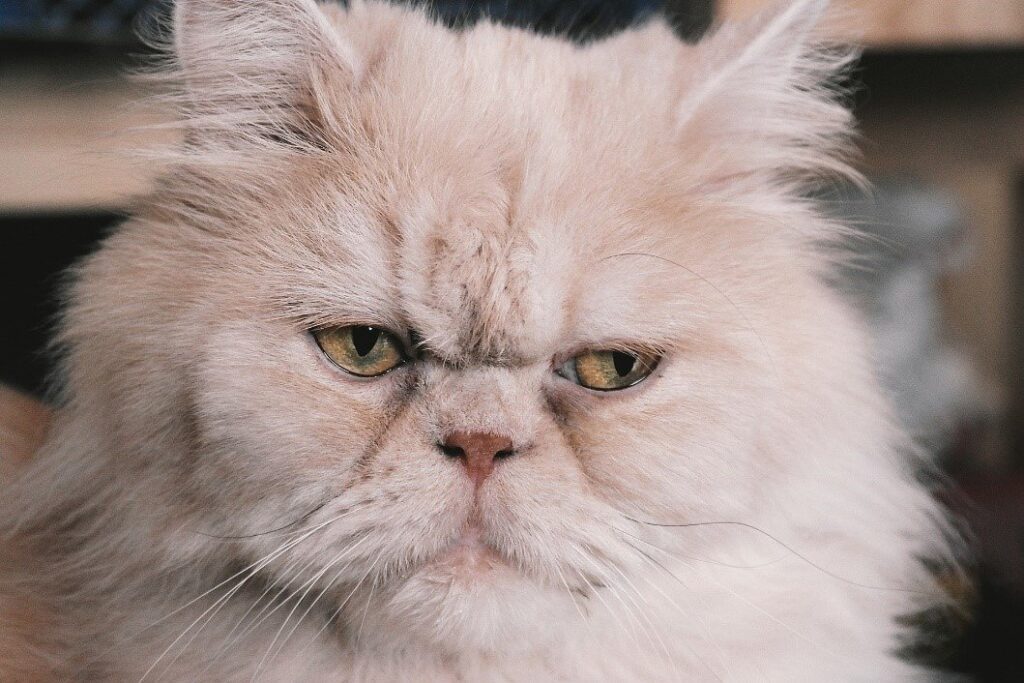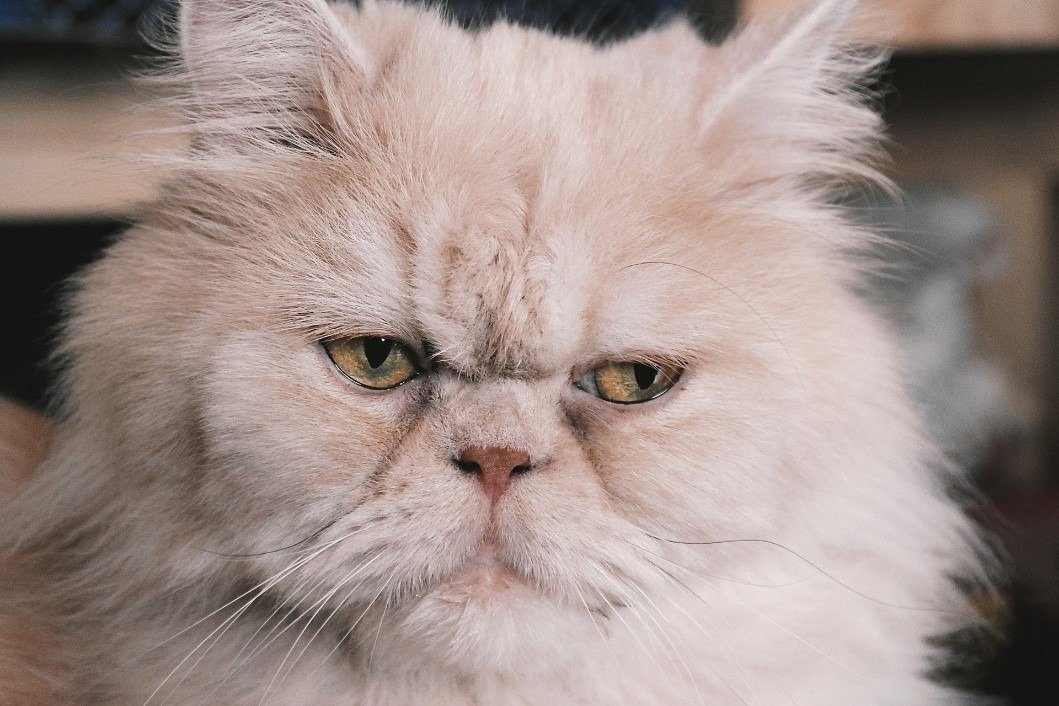Are you a proud owner of a Persian cat but struggling with excessive shedding? If so, you’re not alone. Dealing with excessive shedding can be a challenge, but there are solutions and tips to help you minimize the fur around your house. In this article, we will explore different strategies and techniques that can help reduce shedding in Persian cats. From grooming techniques to dietary adjustments, we will provide you with practical advice to keep your furry friend’s shedding under control. So, if you’re ready to say goodbye to clumps of hair and hello to a cleaner home, keep reading for some helpful solutions and tips for managing excessive shedding in Persian cats.
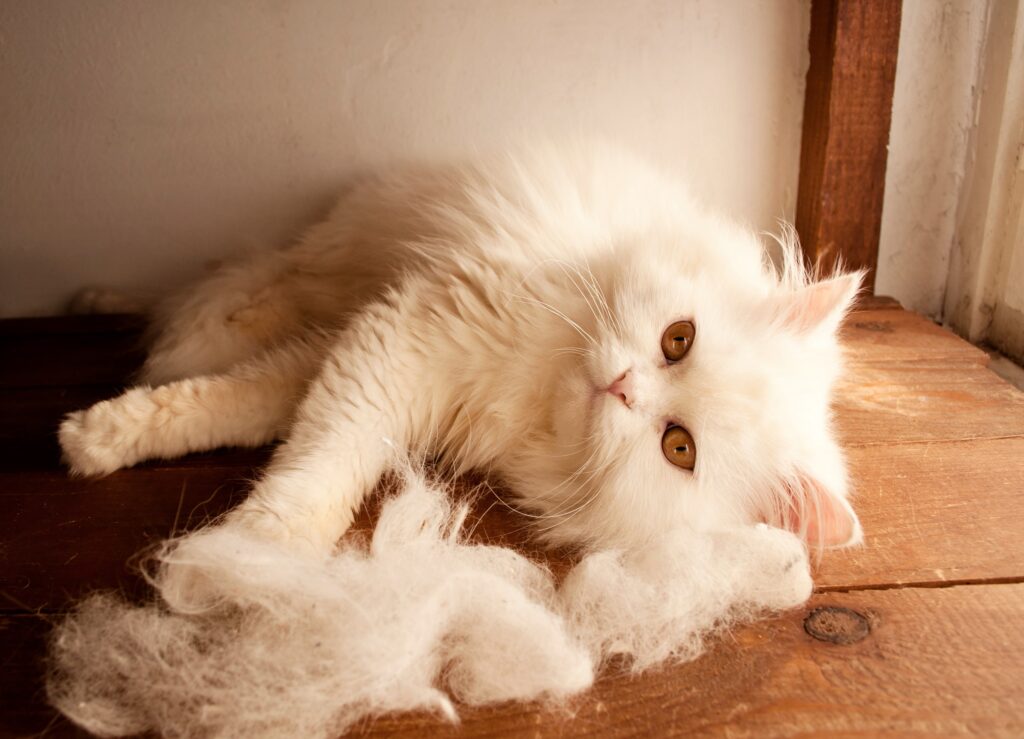
Causes of Excessive Shedding in Persian Cats
Persian cats are known for their luxurious, long coats, but sometimes these beautiful felines can experience excessive shedding. Understanding the causes of this issue can help cat owners take appropriate steps to manage and minimize shedding. There are several factors that can contribute to excessive shedding in Persian cats, including:
Genetics
Genetics play a significant role in the coat quality and shedding patterns of Persian cats. Some cats may simply have a genetic predisposition for shedding more than others. If both of a cat’s parents had heavy coats and shed excessively, it’s likely that their offspring will also experience the same issue.
Hormonal Imbalances
Hormonal imbalances can affect a cat’s coat and lead to excessive shedding. Conditions such as hypothyroidism or hyperthyroidism can disrupt the natural hair growth cycle, causing increased shedding. If you suspect a hormonal imbalance, it’s essential to consult with a veterinarian for proper diagnosis and treatment.
Stress or Anxiety
Stress and anxiety can have a direct impact on a Persian cat’s shedding. Cats are sensitive creatures, and environmental changes, such as moving to a new home or the addition of a new pet, can trigger stress and lead to excessive shedding. Creating a calm and stable environment for your cat can help minimize shedding caused by stress.
Poor Nutrition
Proper nutrition is crucial for maintaining a healthy coat in Persian cats. If a cat’s diet lacks essential nutrients such as omega-3 fatty acids, biotin, and vitamins, it can result in dull, brittle fur and excessive shedding. Ensuring your cat is on a high-quality, balanced diet specifically formulated for their needs can help promote a healthy coat and reduce shedding.
Identifying Excessive Shedding
To effectively manage and address excessive shedding in Persian cats, it’s important to be able to identify when shedding is becoming a problem. Keep an eye out for the following signs:
Frequency of Shedding
While shedding is a natural process for cats, excessive shedding occurs when the frequency of shedding becomes significantly higher than usual. If you notice that your Persian cat is shedding excessively throughout the year rather than during seasonal shedding periods, it may be a cause for concern.
Size and Amount of Fur Clumps
Take note of the size and amount of fur clumps you find around your home. If you consistently find large clumps of fur or notice an increase in the amount of shedding, it’s an indication that your cat is shedding more than normal.
Balding or Thinning Areas
Another telltale sign of excessive shedding is the development of balding or thinning areas on your cat’s body. If you notice patches where the fur is sparse or completely absent, it suggests a problem with shedding.
Tips for Managing Excessive Shedding
When it comes to managing excessive shedding in Persian cats, prevention and proactive measures are key. Here are some tips to help keep shedding under control:
Regular Grooming Routine
Establishing a consistent grooming routine is essential for managing shedding in Persian cats. Daily brushing helps remove loose hair and prevents it from accumulating. Use a specialized cat brush or comb that is designed to reach through the thick fur and detangle any knots or mats gently.
Proper Nutrition and Diet
Providing your Persian cat with a well-balanced diet that is rich in essential nutrients is crucial for a healthy coat. Look for cat foods that contain ingredients like omega-3 fatty acids, biotin, and vitamin E, as these promote coat health and minimize shedding. Consult with your veterinarian to ensure you’re feeding your cat a diet that meets their specific needs.
Stress Management
Reducing stress and anxiety can have a positive effect on a Persian cat’s shedding. Create a calm and secure environment for your cat by providing hiding spaces, engaging in regular play sessions, and avoiding sudden changes in their routine. Feliway diffusers, which release calming pheromones, can also help reduce stress.
Medical Check-ups
Regular visits to the veterinarian are crucial for keeping your Persian cat’s overall health in check, including their coat condition. If you notice excessive shedding, it’s important to rule out any underlying medical conditions that may be contributing to the issue. Your veterinarian can perform tests and examinations to identify and address any health concerns.
Grooming Techniques to Reduce Shedding
Beyond regular grooming, certain techniques can help minimize shedding and keep your Persian cat’s coat in top condition. Here are some grooming techniques to consider:
Daily Brushing
Make a habit of brushing your Persian cat’s coat every day. Using a slicker brush or a comb with widely spaced teeth, gently work through the fur, removing loose hair and preventing mats from forming. This not only reduces shedding but also distributes natural oils and stimulates blood flow to the skin.
Bathing and Drying Techniques
Periodic baths can help remove excess hair and reduce shedding in Persian cats. Use a cat-specific, hypoallergenic shampoo and warm water to gently cleanse the coat. Make sure to thoroughly dry your cat after bathing, as a damp coat can contribute to mats and skin issues.
Use of Deshedding Tools
Incorporating deshedding tools into your grooming routine can be highly effective in reducing shedding. Tools like deshedding brushes or grooming gloves are designed to remove loose hair from your cat’s coat without causing any discomfort or harm. These tools are particularly useful during shedding seasons.

Recommended Products for Controlling Shedding
To aid in your efforts to manage shedding in Persian cats, consider using specialized products that are designed to control and minimize shedding. Here are some recommended products:
Specialized Cat Brushes
Invest in a high-quality cat brush that is specifically designed for Persian cats. Look for brushes with stainless steel teeth or bristles that can reach through the dense fur, effectively removing loose hair.
Anti-Shedding Shampoos
Anti-shedding shampoos formulated for cats can help reduce shedding by strengthening and nourishing the coat. These shampoos often contain ingredients like biotin and omega-3 fatty acids, which promote healthy hair growth.
Supplements for Healthy Coat
Certain dietary supplements can support a healthy coat and minimize shedding. Omega-3 fatty acid supplements, such as fish oil capsules formulated for cats, can be beneficial in improving coat quality and reducing shedding. Consult with your veterinarian before introducing any supplements to your cat’s diet.
Home Remedies for Minimizing Shedding
In addition to using specialized products, there are some home remedies that can help minimize shedding in Persian cats. Here are a few:
Adding Oils to Their Diet
Supplementing your cat’s diet with certain oils can improve coat health and reduce shedding. Adding a small amount of fish oil or coconut oil to their food can provide essential fatty acids that promote a healthy and shiny coat.
Regularly Cleaning Living Space
Regularly cleaning your home and removing accumulated cat hair can make a significant difference in managing shedding. Vacuuming your carpets, wiping surfaces, and using lint rollers on furniture help minimize loose fur from spreading and reduce the amount of shedding in your living space.
Using Cat-Friendly Air Purifiers
Investing in a cat-friendly air purifier can help reduce allergens and loose fur particles in the air, which can ultimately lessen shedding. Look for air purifiers that specifically target pet dander and have a HEPA filter for maximum effectiveness.
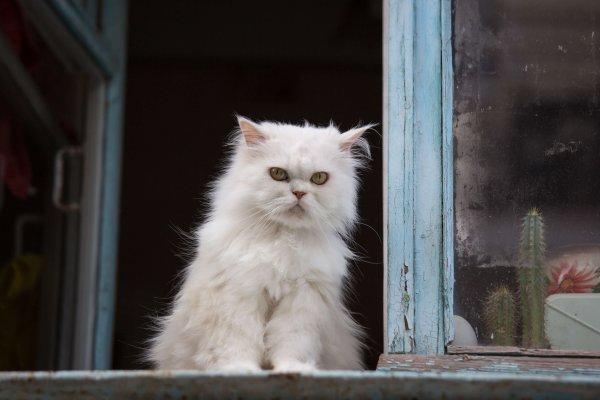
Importance of a Balanced Diet for Persian Cats
A balanced diet is vital for maintaining a healthy coat in Persian cats. Providing the right nutrients helps support coat health from within. Here’s why a balanced diet matters:
Essential Nutrients for Healthy Coat
Persian cats require specific nutrients to maintain a thick and lustrous coat. These include omega-3 and omega-6 fatty acids, biotin, vitamins A, E, and C, and high-quality proteins. A balanced diet that incorporates these essential nutrients promotes healthy hair growth and minimizes shedding.
Avoiding Allergenic Ingredients
Some cats are sensitive to certain ingredients, resulting in skin issues and excessive shedding. Avoiding common allergens like grains, artificial additives, and low-quality proteins can help minimize allergic reactions and associated shedding.
Feeding Schedule and Portions
Establishing a consistent feeding schedule and controlling the portions are essential for a healthy coat. Overfeeding can lead to obesity, which can negatively affect a cat’s coat quality and contribute to shedding. Consult with your veterinarian to determine the appropriate portion sizes and feeding frequency for your Persian cat.
Common Mistakes to Avoid when Managing Excessive Shedding
While you’re trying to address excessive shedding in your Persian cat, it’s important to avoid certain mistakes that can exacerbate the issue. Here are some common pitfalls to steer clear of:
Over-bathing
Bathing your Persian cat too frequently can strip their coat of natural oils and cause dryness. This can lead to increased shedding. Unless your cat has a particular need for more frequent baths, aim for bathing no more than once every few months.
Using Incorrect Grooming Tools
Using the wrong grooming tools can do more harm than good. Avoid brushes with sharp or stiff bristles that can cause discomfort or damage to your cat’s delicate skin. Stick to brushes and combs that are specifically designed for Persian cats.
Neglecting Regular Vet Check-ups
It’s easy to assume that excessive shedding is solely a grooming issue, but underlying health problems can also contribute to shedding. Regular vet check-ups are essential for monitoring your Persian cat’s overall health and identifying any potential medical causes for excessive shedding.
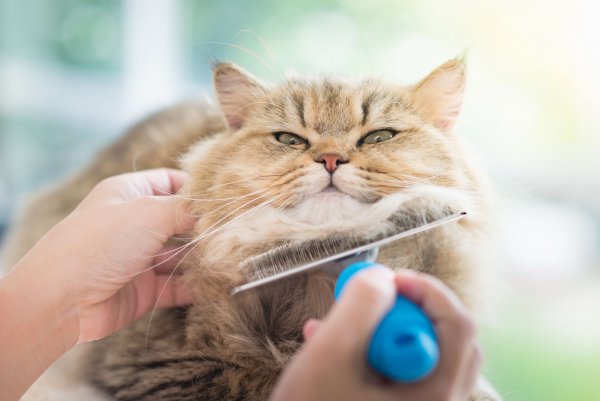
Professional Grooming Services for Persian Cats
While regular at-home grooming is crucial, there are benefits to seeking professional grooming services for your Persian cat. Consider the following:
Benefits of Professional Grooming
Professional groomers are experienced in handling and grooming Persian cats. They have the knowledge and tools required to address shedding effectively. They can also help maintain the coat’s health by removing excess hair, preventing matting, and ensuring proper hygiene.
Finding a Reputable Groomer
When selecting a professional groomer for your Persian cat, it’s important to do your research and find a reputable one. Look for groomers who specialize in cats, have positive reviews, and prioritize the well-being and comfort of the animals in their care.
Frequency of Grooming Appointments
The frequency of professional grooming appointments depends on the needs of your Persian cat. Generally, a visit every 6-8 weeks can help keep shedding under control and ensure the coat remains healthy and free of mats. However, consult with your groomer to determine the ideal grooming schedule based on your cat’s individual requirements.
Understanding the Natural Shedding Cycle of Persian Cats
To effectively manage shedding, it’s important to understand the natural shedding cycle of Persian cats. Here’s what you need to know:
Shedding Seasons
Persian cats, like many other long-haired breeds, have two main shedding seasons: spring and fall. During these periods, they shed their winter coat to prepare for the changing weather. Shedding is typically more intense during these seasons but should gradually reduce outside of them.
Identifying Normal Shedding
While shedding is a normal part of a Persian cat’s life, it’s important to differentiate between normal shedding and excessive shedding. As mentioned earlier, excessive shedding is characterized by an increase in frequency, larger fur clumps, and balding or thinning areas. If you notice these signs persistently, it’s worth investigating further.
Hair Growth Phases
Understanding the hair growth phases of Persian cats helps in managing shedding. Cats have three hair growth phases: the anagen phase (active growth), the catagen phase (transition phase), and the telogen phase (resting phase). Shedding mostly happens during the telogen phase when old hairs fall out to make room for new ones.
By being aware of the shedding seasons, identifying normal shedding patterns, and understanding the hair growth phases, you can better manage and address excessive shedding in your Persian cat.
In conclusion, excessive shedding in Persian cats can be managed through regular grooming routines, proper nutrition, stress management, and veterinary care. By incorporating effective grooming techniques, utilizing recommended products, and implementing home remedies, you can keep your cat’s shedding in check. Remember that a balanced diet and regular veterinary check-ups are essential for overall coat health. Avoid common mistakes and consider professional grooming services when necessary. With a comprehensive approach, you can ensure that your Persian cat’s coat remains healthy, lustrous, and shedding is minimized.
